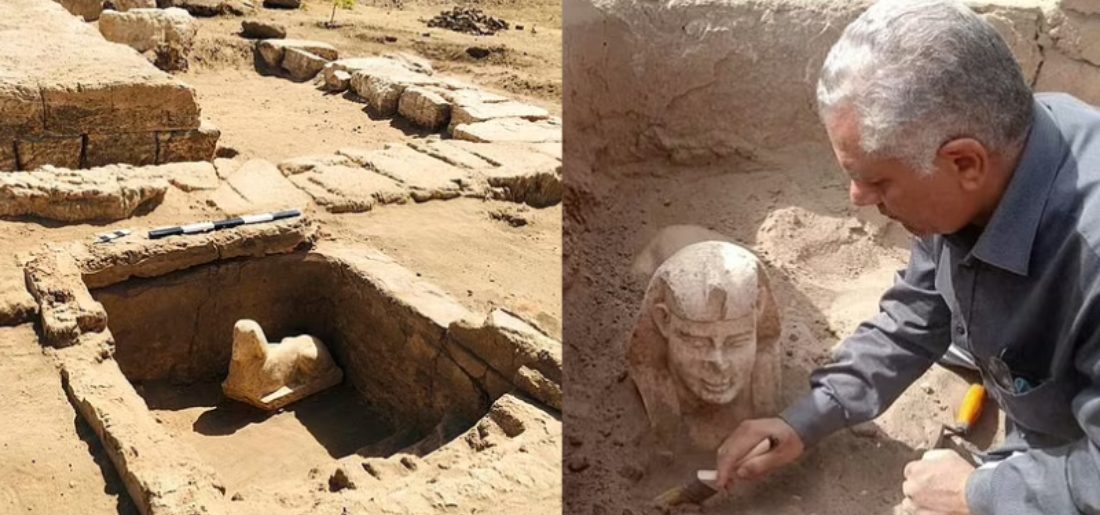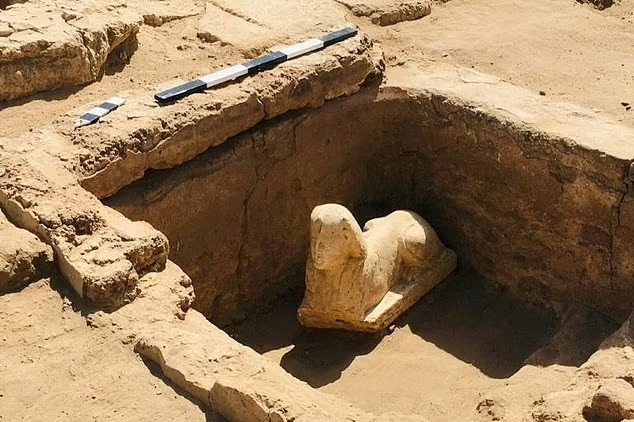Archaeologists in Egypt have discovered a statue that resembles the 2,000-year-old sphinx and it even has a smiling face and dimples. The astounding discovery was made in the Qena Province of southern Egypt, close to the Dendera Temple complex.
It was discovered in the temple’s two-level tomb, which contained the ruins of a shrine. The statue is thought to have been made during the Roman era.

The artefact, which is made of limestone, is thought to be a stylized depiction of an ancient Roman emperor.
According to a Daily Mail report, it is considerably smaller than the sphinx in the Pyramids of Giza. Archaeologists believe that Claudius, who ruled Rome from 41 to 54 AD, was portrayed in the statue. On the Ministry of Tourism and Antiquities’ Facebook page, a picture of the discovery was posted.
The famous sphinx in the Pyramids of Giza, which is 66ft (20ft) high, is much larger than the limestone artefact, which is thought to be a stylised representation of an ancient Roman emperor.
In a two-level tomb at the temple of Dendera in Qena Province, 280 miles (450 kilometres) south of Cairo, it was discovered alongside the ruins of a shrine.

The ‘beautifully and accurately carved’ sphinx was discovered close to the Hathor Temple, one of Egypt’s best-preserved ancient sites, according to the antiquities ministry of Egypt. In addition to a Byzantine-era two-layer platform and mud-brick basin, archaeologists also discovered a Roman-era stone slab with hieroglyphic and demotic inscriptions.
The team of archaeologists also discovered Roman-era chapel ruins
The page stated that a statue of a Roman emperor in the shape of a Sphinx had been discovered by archaeologists during excavations in the area east of the Dendera Temple in the Qena Governorate. It was also mentioned that the team of archaeologists discovered Roman-era chapel ruins and a limestone offering table.

The sphinx-like statue was discovered during the excavation of a Byzantine-era mud-brick basin. The dig, according to reports, was conducted by an archaeological mission from Cairo’s Ain Shams University. Mamdouh Eldamaty, a former minister of antiquities, served as its leader.
“Dr Mamdouh Eldamaty described the statue as beautifully striking, with royal features depicted accurately, showing a slight smile on his lips, which have two dimples on their ends. he remains of yellow and red colours also appear on his face, and a Roman-era painting written in hieroglyphics and demotic was found under the statue,” said Egypt’s Ministry of Tourism and Antiquities.
The discovery comes shortly after a secret passageway in Egypt’s Great Pyramid of Giza was uncovered.
What do you think about this? Tell us in the comments.





